It was right at the top of the list of things I would never do.
Indian Face is not the hardest trad route in Britain, but it’s perhaps the most infamous. It was the UK’s first E9 and the wildest thing I had heard of when someone described it to me at the age of fourteen. Failure on the route, an insecure 150-foot face climb with barely anything to protect it, is thought to be fatal, although no one has yet taken the big fall. The notion of climbing something so outrageously bold just blew my little mind. Since the first ascent in 1986, only a handful of climbers have rolled the dice with a lead, none without some form of top-rope rehearsal and none without a story to tell afterward.
[Ed note: Indian Face is rated E9 6c, which roughly means very, very run-out 5.12+.]
When I first visited Indian Face, it was just curiosity. I just wanted to see it in the flesh, put a name to a face. The route is immaculate, so thin it’s barely there; you just balance your way tentatively up this improbable slab. I’d walk up to Clogwyn D’ur Arddu (Cloggy), on the side of Snowdon in North Wales, just to have a look. Another harmless visit, on my own, keeping it quiet. I would play on a fixed line, fascinated by it, but sickened by the thought of leading it with so little gear.
By my third visit, it was too late to realise how dangerously infectious the route was. Once I realised I could climb it, all I could think about was Indian Face. It was like I didn’t have a free moment. I’d be nodding absently in conversations with my friends, while my mind drifted up to Cloggy. I was quietly contemplating the consequence of a fall from any particular point on the route, trying to work it through in my head, trying to justifying it to myself.
There was no sense in it, but Indian Face was irrepressible. I began wishing I had never heard of it. The more I thought about the climb, the more it became like a sickness. I couldn’t bear the torment of knowing it was possible, but neither could I justify climbing it.

It was clear that morning in early July. The uncharacteristically warm and stable weather of 2018’s summer in Britain heralded some rare ascents in Wales. If you were going to climb something on Cloggy, now was the time.
It’s an hour and a half walk from my house in Llanberis up to Cloggy, which is a long time to think about what you’re going to do. I had to chalk up twice before I left the house, despite maintaining a sort of denial about the proposition of potentially leading Indian Face that day.
I was joined by James Taylor, who had curiously volunteered for a job I hadn’t made public. James’ passion is even bigger than his forearms, and what’s more, I knew his passion had been shaped by the same tales as mine: by trad legends and climbing lore. We set off in the heat with a gallon of water and enough rack to convince ourselves we would have a normal day trad climbing.
The crag came into view as we rounded a corner, dark despite its brightly-lit surroundings. Cloggy only gets the sun a few evenings in midsummer. I suppose that supports the dark reputation that Indian Face has.
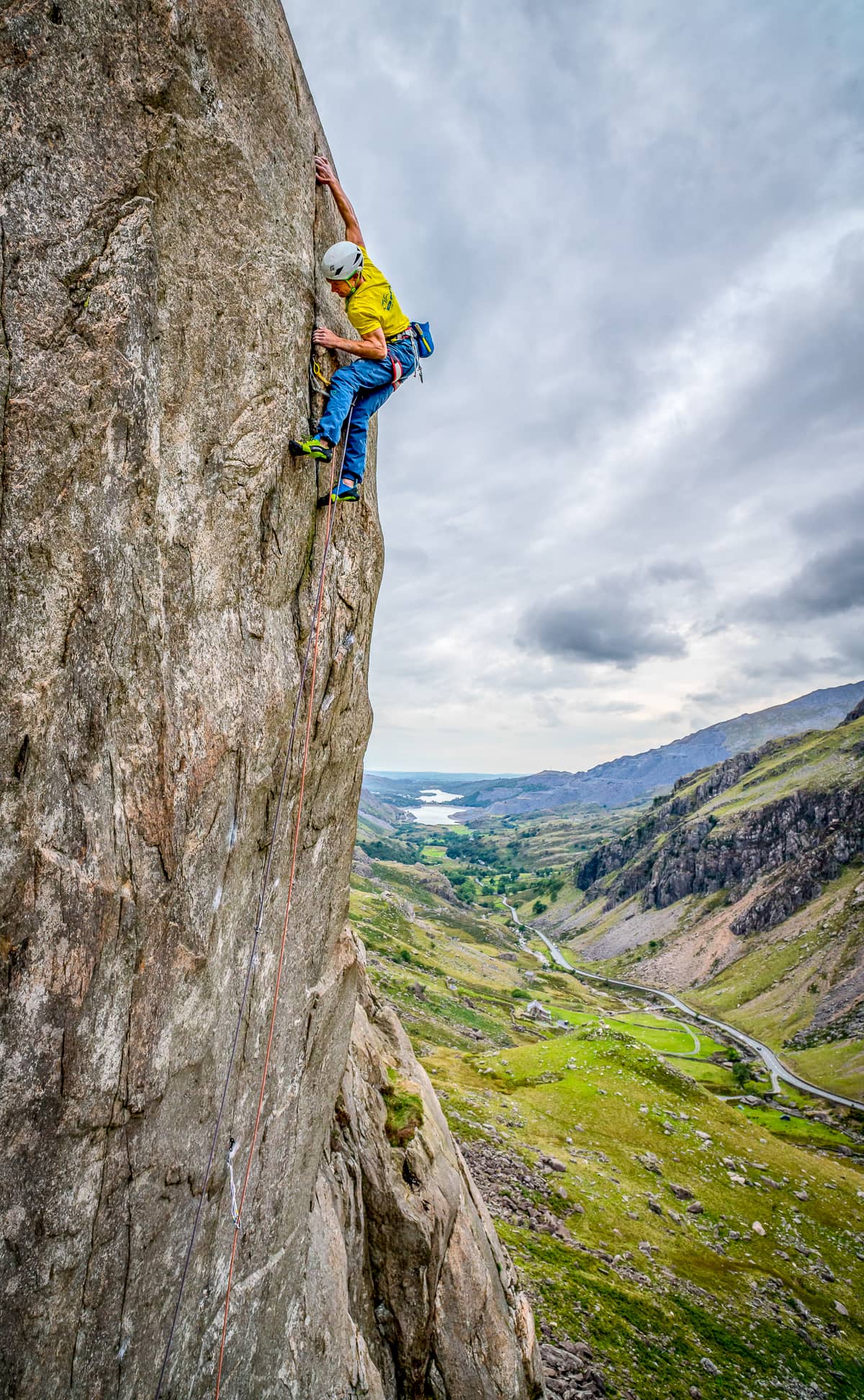
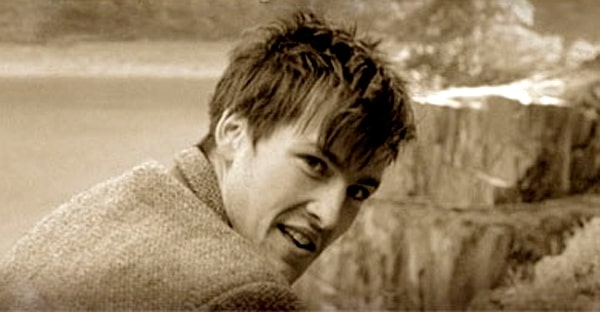
When Johnny Dawes made the long-awaited first ascent, no route had been given the dizzying grade of E9 before and the climbing world was alight with the notion of something so bold and unforgiving.
“A pitch of such appalling difficulty as to be almost beyond the realms of human comprehension,” wrote Paul Williams in his 1989 guidebook. “Protection is at best illusory; the whole sweep of rock affords not so much as a single nubbin on which the thinnest line may be secured, nor a single crack in which the most vestigal of chockstones could hope to gain lodgement. Should the leader fail to negotiate the crux, or be seized by a palsy high on the pitch, disaster must be imminent….”
It was eight years before Nick Dixon made the second ascent and confirmed its dreadful reputation. Having known him since my early climbing years, Nick was a catalyst to my climbing and the only person to actively encourage me to climb Indian Face despite the risk.
I was fifteen when I first read Neil Gresham’s terrifying account of his own ascent of the route. He described his heart pounding almost hard enough to push him off the wall. He was scraping his face on the rock to stay on as the tremor in his legs spread to his fingers, creeping on the brittle crux edges.
“The test here is the ability to say no, to walk away, and put out the fire,” Gresham later wrote.
But for me the seed had already been sewn.
The stories I’d heard of the route were comparable to folklore, with the trademark embellishments of hearsay, but rumour left its impression on my young mind and neither maturity nor reality would change that.

James and I branched right onto the path leading over to the crag and we were glad to reach the great shadow of Cloggy looming over us. We still hadn’t discussed my intentions; we didn’t need to. James knew what the route meant and he knew me. Remarkably, he was willing to entertain both my ambition and my denial.
We weren’t the only ones making the most of the weather. At the foot of the crag another team was laughing and messing about with their ropes—old boys out for a bit of rambling. We could hear their banter from far off and as we got closer, they came into focus.
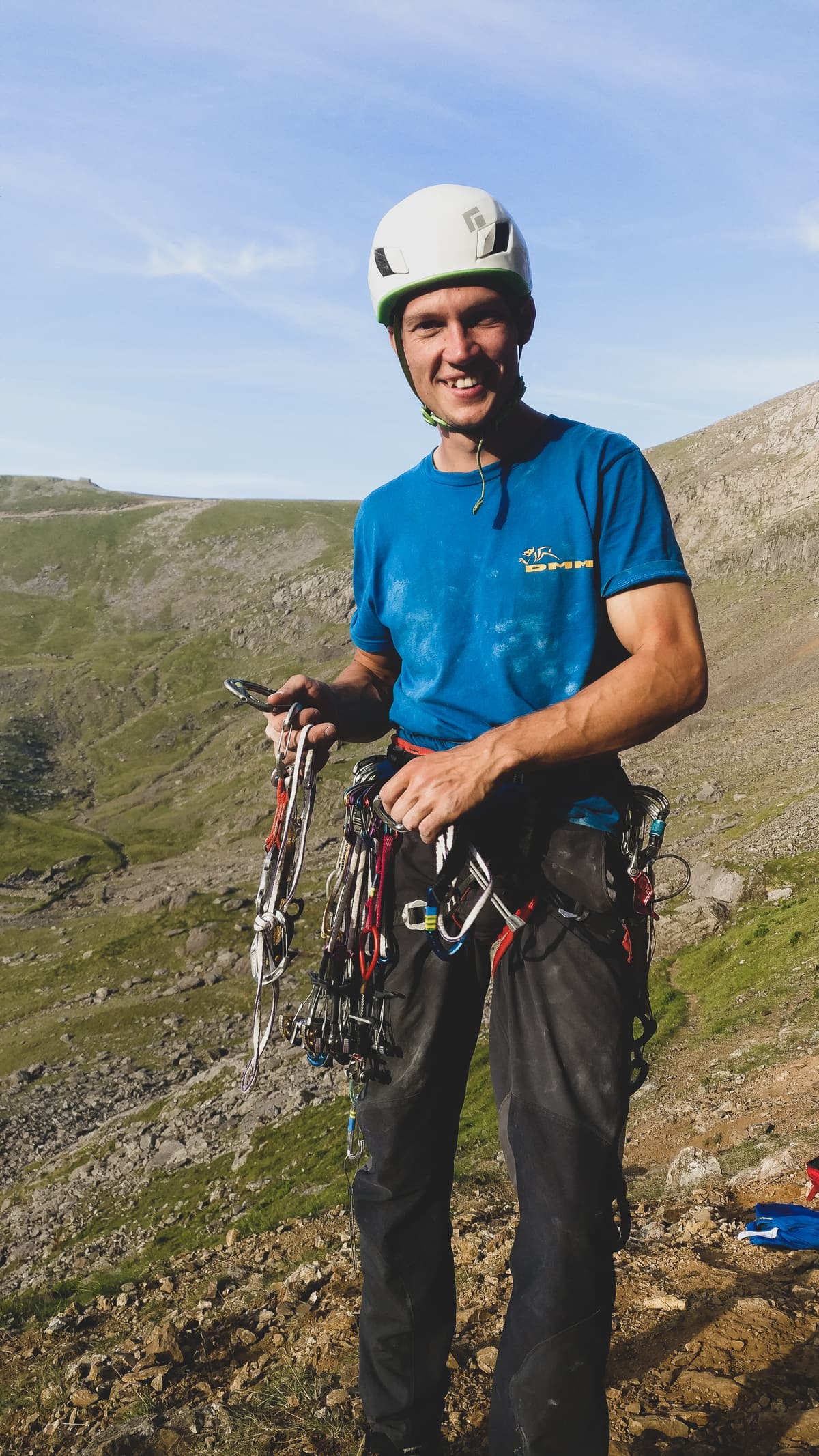
“What are you doing here?” one of them called over with a big grin. It was Johnny Dawes, defending his old stomping ground, looking giddy and youthful in his old-school climbing gear.
“You here for The Face?” asked Nick Dixon knowingly. Meeting Nick at Cloggy is like being welcomed into someone’s home.
“Yeah, I think so,” I replied, finally breaking the spell and saying it out loud. It felt bold just saying it, but I suppose you don’t need to explain your obsession or your passion to these guys, they’re full of it.
Nick and Johnny were up to their usual tricks of smashing out hard routes in their 50s. Johnny was making the first ascent of a new E7, Nick adding it to the list of bold trad routes he had done that week. I was in good company; these boys were responsible not only for the conception of Indian Face, but for my obsession with it, too.
At the base of the Great Slab, Indian Face rose up above me, the entire 50-metre sweep of rock, blank and perfect, the cleanest line on one of the greatest rock faces in Britain. After scrambling round to the top of the crag, I threw a rope down and hung around to see what kit I could place on the route. Johnny swung over whilst lowering from his new route, grabbed my wires and fiddled in an offset RP-0.
“That’s the one that would have caught me,” he said, having wiggled it into an invisible slot below the other little RPs. No one has ever tested the 50-foot fall from the crux, but I was sure Johnny knew better than anyone. I nodded excitedly with my new beta, stripped my kit from the route and abseiled down to the ground with the tingling excitement that this could actually happen.
It’s a death route.”
That’s what my friend Emma Twyford had said when I made the mistake of raising it with her one day in Llanberis. Despite being one of Britain’s top climbers, Emma had dismissed the idea of ever climbing Indian Face herself when she watched Calum Muskett go for it. Calum, another star of British trad climbing, had wobbled and slapped at the crux, just scratching through.
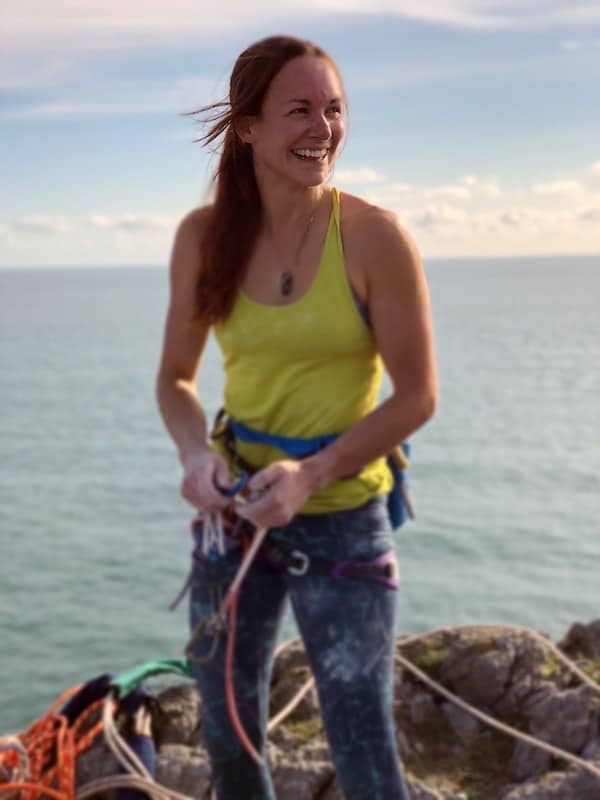
As Emma stared back at me, concerned that I was seriously considering Indian Face, I had felt the shame of being an insolent little punk, evoking the reputation of a route that was too bold for some of Britain’s best and trying to match myself to it. And at what price?
It’s not a “death route” if no-one has died on it, I thought, but said nothing and backed into an embarrassed silence.
After that I kept quiet about Indian Face. As it grew into a preoccupying obsession I would refer to obliquely but never admit to it. I didn’t talk about my visits to Cloggy and I was evasive when friends asked what I was up to. There were friends that shared the fantasy, agreed that it was there and it was beckoning, but those that didn’t think it was a bad idea either didn’t know the route or didn’t know me.
My head was flooded. This climb could be perfection: the moment of absolute control, walking the impossibly thin line that split my fourteen-year-old mind. And what about the alternative? You could be a better climber than me and fall off … “Lift one finger just slightly, and you’ve gone,” as John Redhead, the first climber ever to attempt Indian Face, described it.
But I could do it. I would never forget about it if I didn’t. Could I really walk away now? It would be lame to let fear tell the story for me. How long would it be before I could sleep properly? I told myself I couldn’t justify not doing it.

I pulled the ropes, it was time to go for the lead.
It took a good half an hour to get my head right. Lots of breathing and a few quiet words with myself: everything was in place, the only variable left was me.
I tied into one half-rope and racked the slings, screamers, and brass RPs onto my harness. I tried not to look nervous as James took a picture of me getting my shoes on. Perhaps that’s the crux: getting your shoes on and leaving the ground.
At first, it was difficult to believe that I was actually climbing it. It felt surreal, as though I were reliving a dream of my 14-years-old self.
A rhythm came to my climbing and I settled into a sort of flow. Then followed a section of climbing that I didn’t know I could climb so well until I was on the lead.
There are a million holds on the slab, most of them are either bad or lead nowhere; you have to choose your path carefully. Each move is a compromise between difficulty and security. You’re constantly balancing along a thin line in which you maintain an awareness of the risk without letting it devolve into a paralysis of fear.
About a third of the way up the route, before the tricky, technical section leading to the “illusory protection,” the sun came onto the slab. In retrospect, I suppose this was foreseeable, but with everything else I had considered, I hadn’t thought about the sun’s movement through the sky. It was warm. The holds suddenly felt smaller, thinner. I was clearly chalking up more than usual.
I continued on, nervously, even wobbling a little. I hadn’t anticipated this hindrance. I could have down-climbed from a skyhook, or something, but I’d already committed that far and didn’t really want to back down.
With some relief I reached Johnny’s tiny wire placement and desperately fiddled it in. Having finally clipped my rope to something, I spent another ten minutes arranging a nest of gear—a complex web of slings and brass offsets. As I tugged tentatively on the wires to seat them, I was terrified that they might pull out and throw me off balance. I also jammed a pecker into the seam of a thin, creaky flake. I didn’t bother with skyhooks in the end as I thought they were useless. Besides, I hate the sound of them coming off the moment you climb above them, bouncing down the wall with the ring of a tolling bell.
The best pieces were a pair of 5mm size-two RPs, extended below all of the other kit with a screamer and a rolling quickdraw on each. There was nothing substantial there. Perhaps I could have lowered-off that gear but it’s hard to imagine it withstanding a real fall.
I’ve been asked why I didn’t consider soloing the route, but the slings and rope were enough to weave some uncertainty as to the outcome of a fall, which is as good as hope, I suppose.
Leaving the relative safety of this nest of gear was problematic, however, and I dithered for another ten minutes, unsure of how to negotiate the web of slings. By now, I was beginning to tremble. My feet hurt, the rock was warm in the sun, and I was wrapped up in a bunch of kit that wouldn’t even catch me. Everything felt different.
I eventually made up a new sequence and pulled shakily up the remaining five metres to Contemplation Ledge—an almost flat “ledge” the size of my open hand. Once I had precariously manteled onto the ledge, I could stand there almost indefinitely, contemplating the five metres of crux slab climbing to come and the terrifying consequence below.
In reality, there’s little contemplating to do on Contemplation Ledge: you’ve already made your decision by stepping off the ground. You can’t go down from here. It was refreshing and simple, there was nothing left to do but climb it. For some reason, it felt as if the consequence no longer mattered—the dice had already been rolled, the outcome was no longer my concern, only the climbing. Having a big name, or even big forearms, wouldn’t help now.
I realised quickly that if I waited around it would all unravel, so I abruptly set off into the crux sequence, midway through saying something to James a hundred feet below. The slab steepened and the holds thinned and I was balancing my way freely through the crux. I remember the little mono stack, the kick out left, the delicate foot change and the rock-over. I remember the precision and the whole immaculate freedom of it. Nothing else in the world was happening at that point, everything was in my hands.
When I reached the safety of the jug, Nick called down with some words that made me proud: “Good lad! Join the club Angus.” I won’t forget him saying that. The finishing ten metres felt like a staircase. I was so elated I had forgotten the glory wire, the best bit of gear on the route, and had to down-climb to place it.
I waited on top to give myself a moment, but nothing happened. It didn’t seem real, it was just another perfect midsummer’s evening. I lowered down and stripped the kit. Johnny’s RP-0 was there, barely holding its own weight in the rock; you couldn’t have hung your coat from it.
Back on the ground, I paced around trying to gather my scattered thoughts. Our stuff was spread out among the jumbled rocks and grass beneath the Great Slab, my dismantled web of gear dumped on the ground in a redundant tangle. I’m not sure what I said to James or Nick but I had the distinct feeling of everything being in order, despite being visibly disorientated.
As we walked out, Johnny met us on the path having spectated from across the lake. “I’m so proud,” he said, “that was a real pleasure to watch.” I often look at the selfie Nick took of us there, with the crag behind us, as rose-tinted as I remember.
I didn’t tell my mates when I got back to the village that evening, I wasn’t ready to talk about it. Recounting the story now feels reductive, it’s too big and intangible for me to do a good job of telling it.
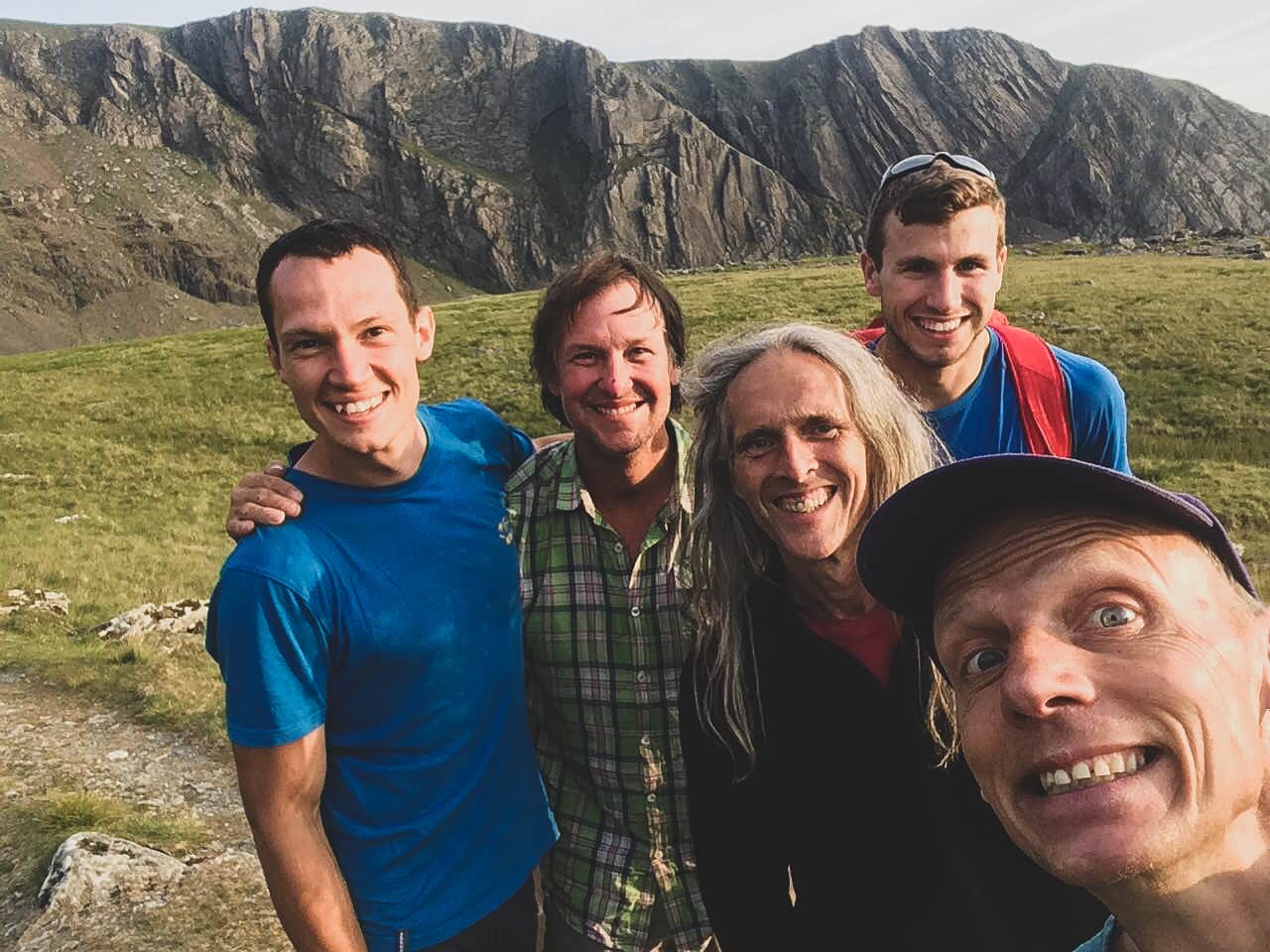
The successful leader, though he be modest of disposition, may relax, and justifiably award himself a ‘pat on the back,’” wrote Paul Williams in his guidebook description of Indian Face.
I love the excessively poetic descriptions of British guidebooks and the rather moderate “pat on the back” I earned that day. But I find it curious that he wrote: “though he be of modest disposition.” Naturally, Indian Face is a fierce route and it demands a degree of respect from the climber who wants to climb it, but the blow to my ego took me by surprise.
I’m in love with the version of events that unfolded and I wouldn’t change a detail, but there was a lasting sense of shame that stammered my explanation of the route to my parents, numbed my ego for the weeks that followed, and eventually matured into a sort of humility. I suppose it would be weird to get cocky over a self-imposed danger you’ve survived.
It’s still hard to justify the ascent; it wasn’t exactly necessary. But climbing is never necessary, it’s a passion—it’s what we do all of the necessary things for. Indian Face was what I really wanted to do—the thought of not climbing it also frightened me. In the end, I chose the risk of falling from Indian Face over the certainty of missing out on what really inspired me, because I thought my climbing ability would sway the odds. In fact, the thought that it depended on me alone was precisely the sense of control I was inspired by. It was perfect.
However, had I fallen, I wouldn’t be telling the story like this. It may even have been told by someone else, one of those friends that had watched nervously as the infatuation set in. I can make my own sense of it, but it’s easy to contrive some sense for an obsession when reality hasn’t bitten and I’m not sitting in a wheelchair. This time, the gamble paid off and I had the best climbing experience of my life, but another roll of the dice could cost me all of the other climbing adventures I’m waiting to have. Perhaps next time I will consider that saying no and putting out the fire is choosing my passion for climbing, rather than walking away from it.

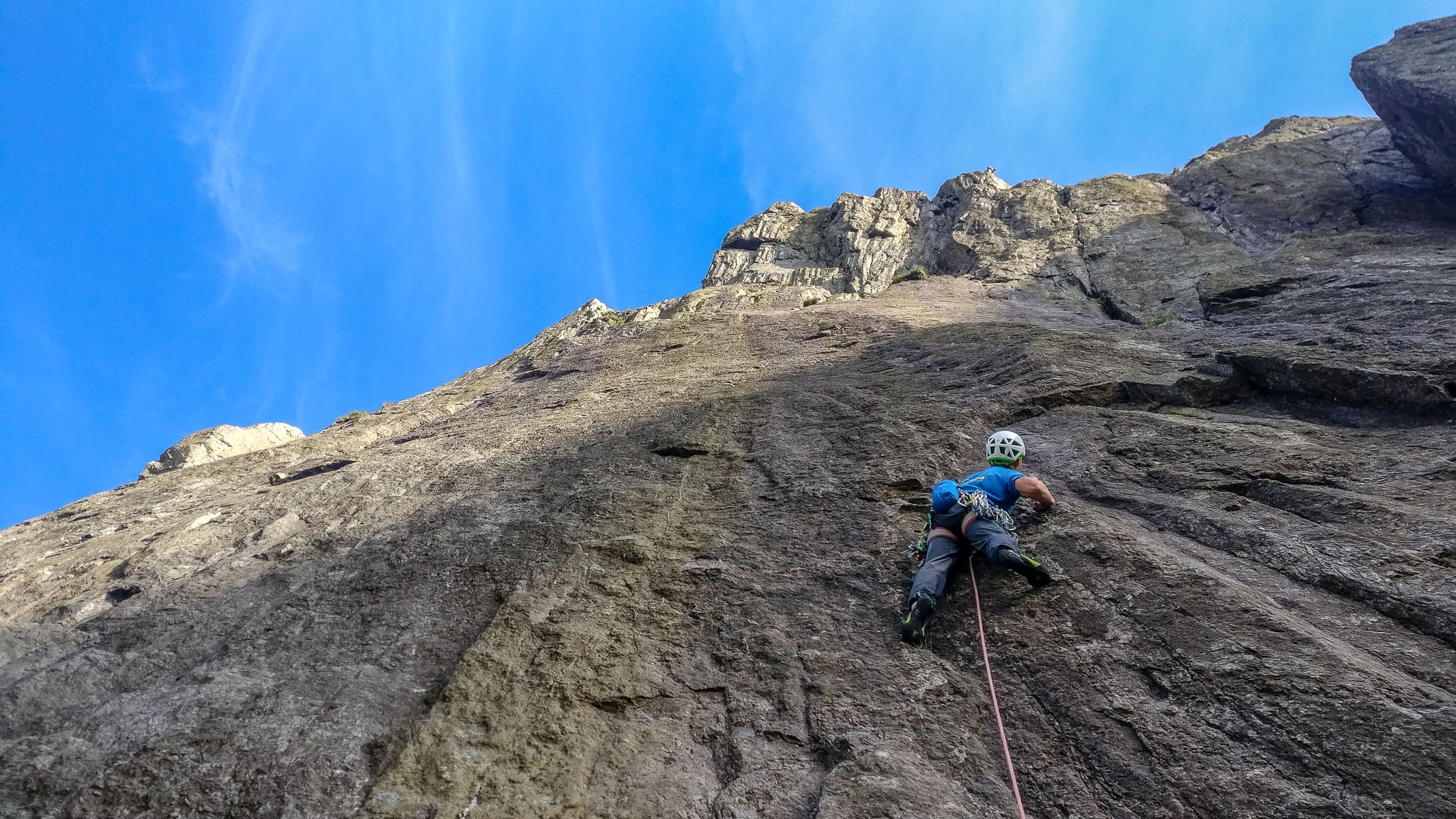
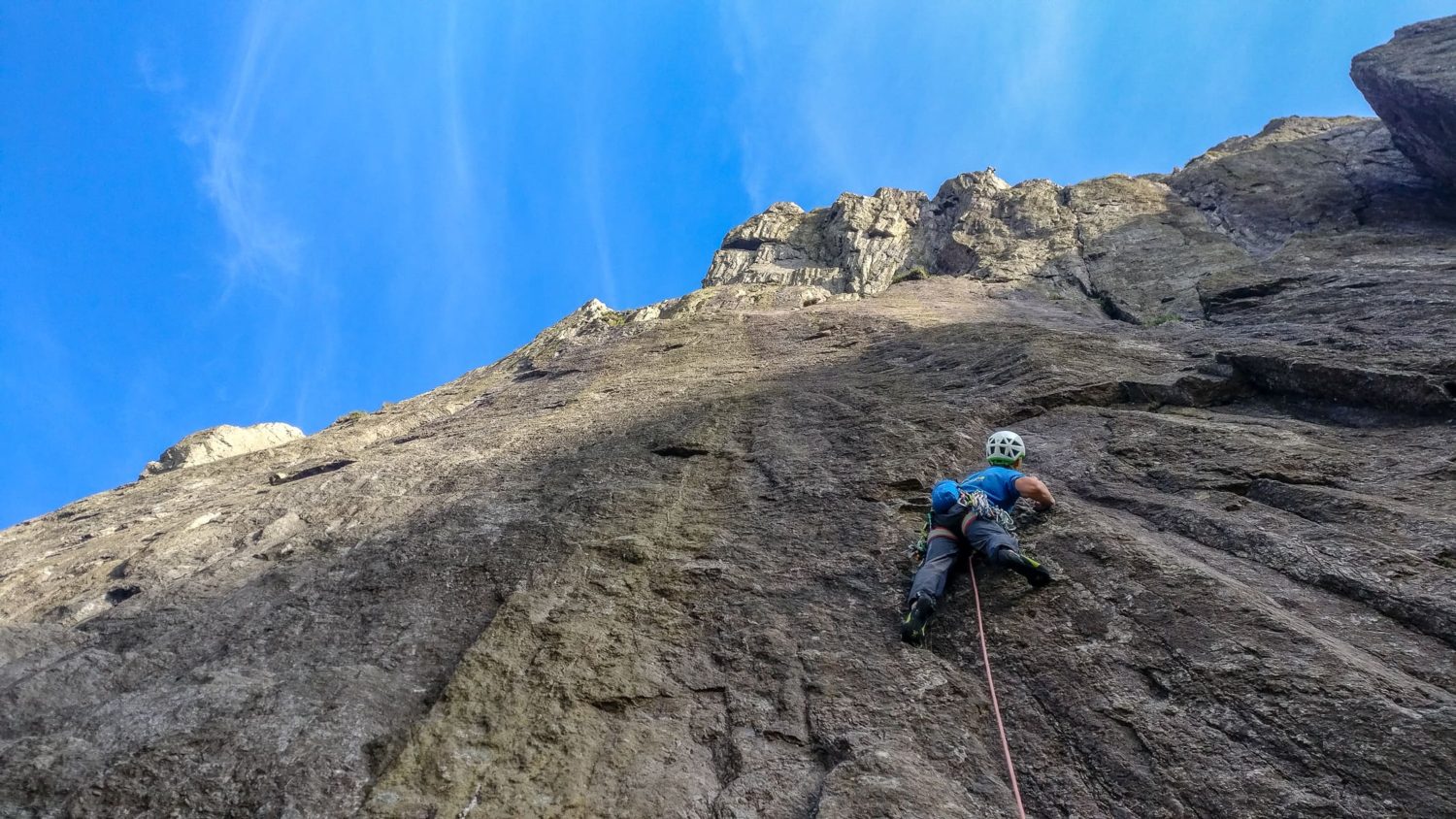
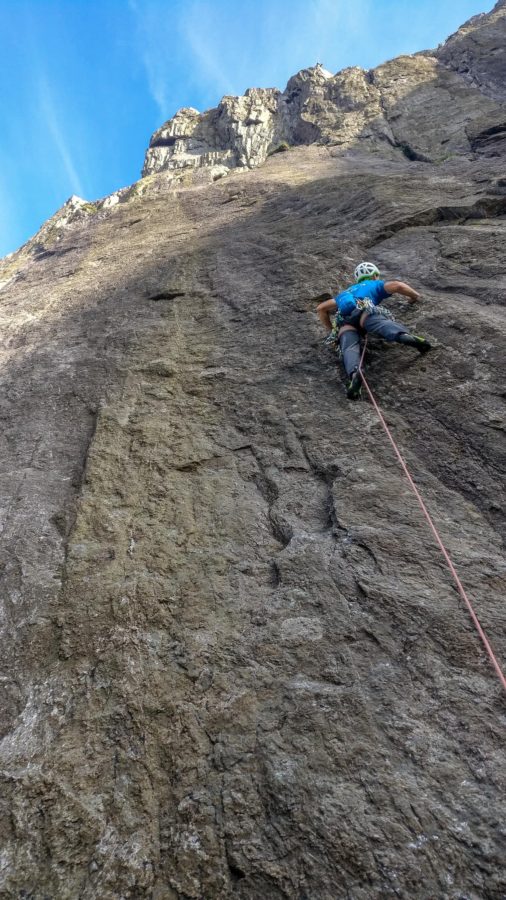
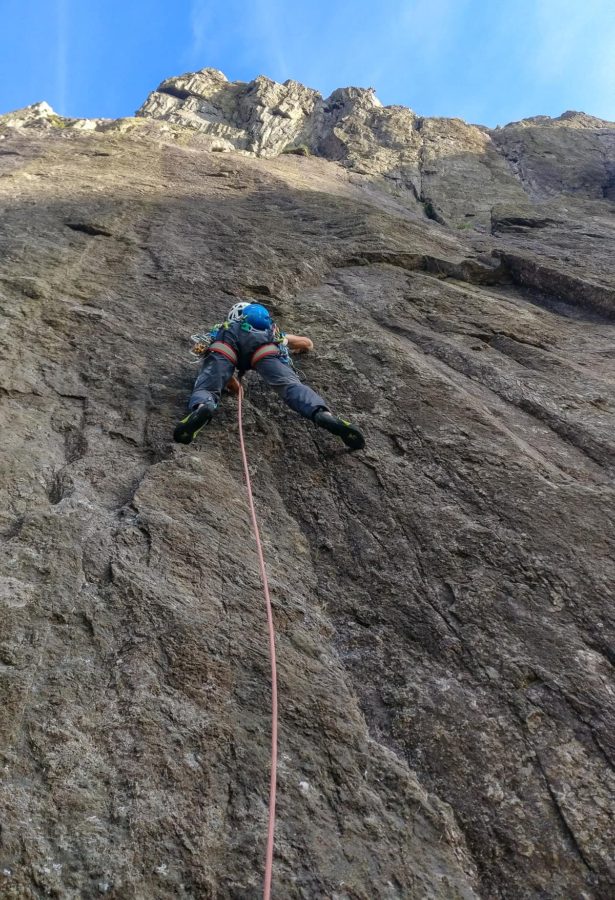
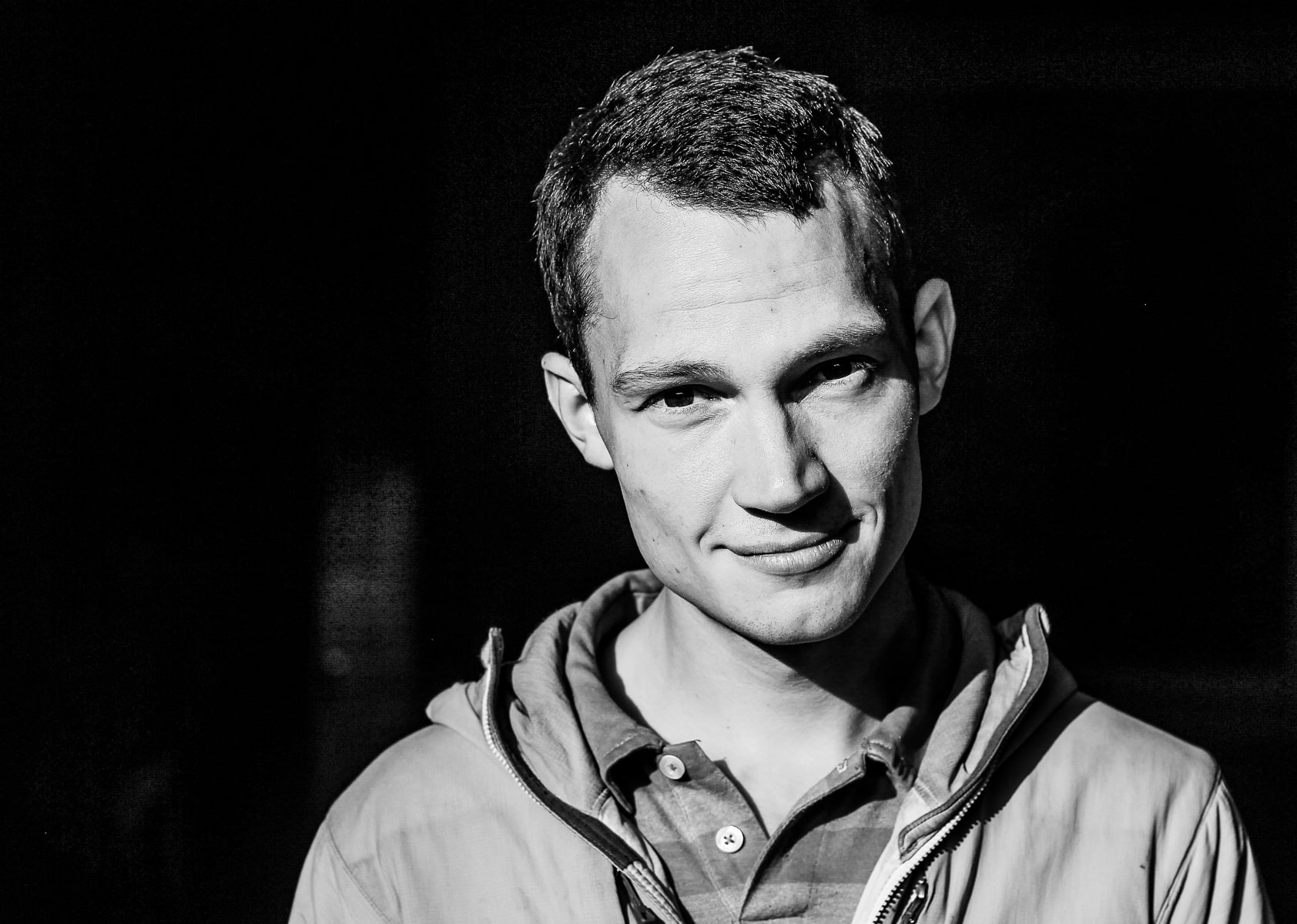

My hands are sweating buckets just reading this… Nice send!
What a beautiful experience… inspiring and honest.
Pretty sure the technical grade of Indian Face is fr8a. That’s .13b not .12+.
How about bolting it so lots more people can enjoy it without risk of death? And then if someone wants to solo it or lead it on gear they still can. Or is there a ban on bolts in that area?
Are you kidding, man?
Superb read and wonderful adventure. The very best of the weird and wonderful non sensical world of British Trad climbing. I dream on…
I have read this several times and it is immense, inspirational, outstanding. I work at the other end of the spectrum but from afar I can see and appreciate the rainbow after the battle through the storm.